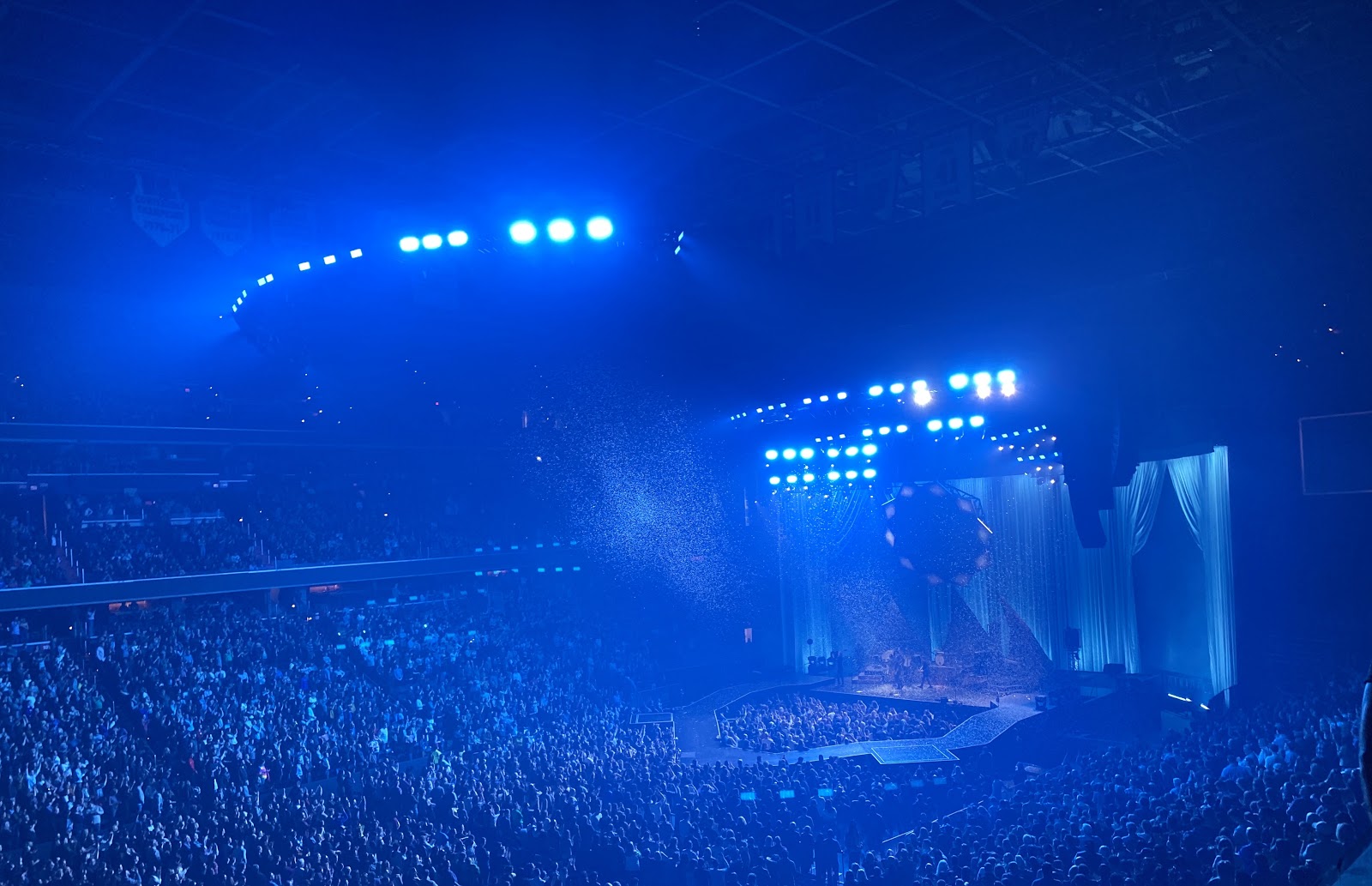Ho Hey The Lumineers Were in Town

Image courtesy of Noelia Veras
By Noelia Veras and Regina Vahey
Beams of bright lights and folky belts filled the Capital One Arena when The Lumineers performed a sold out show in Washington D.C. on Friday, February 28. The band’s North American tour began on January 30 of this year and will end on June 12 of this year.
Around 20,000 people filled the arena, as they sang along cheerfully with the band. Near the stage was a section of standing crowd members, and behind them separated by a gate were chairs on the floor. The rest of the arena was filled by ascending rows of seats with thousands of people feeling the depth of the music being played. The audience members varied in age, many being adults with business casual attire and beers in their hands while others were young college students giddy in their bold clothing. The ambience of the concert was shockingly intimate and comforting, even though so many people were gathered to listen to the handful of musicians play their transcendent music.
The setlist for the night had songs from the latest album III, but also had a balanced amount of songs from previous albums and EPs. Two particularly incredible performances were “Gun Song” and “Leader of the Landslide” because of their resonance with the audience and emotional significance.
“Gun Song” was introduced by Schultz before it was performed. The lead singer mentioned that the song was inspired by true events as he found a gun in his father’s sock drawer after his death, a sight which shocked him and showed him how much of his father he didn’t really know about.
As for “Leader of the Landslide,” the performance was dynamic and raw. Schultz once again introduced the song, saying that it was inspired by a family member who was an addict. The muse of the song never really sobered up and was relentlessly impossible to help. The frustration was etched in every note, especially in the escalating turning point that occured right before the halfway point of the song. Towards the end of the song, though, frustration evolved into resignation as Schultz and his bandmates played softer and quieter, leaving the audience quiet for several moments, before erupting into boisterous applause.
The Lumineers have been an active band since 2005 with many different members entering and leaving the band. Regardless of the continuous change, Wesley Schultz and Jeremiah Fraites have remained consistent since the group’s inception.
Schultz and Fraites began working together in 2002 and played small shows in New York and New Jersey before fully developing the band in Denver in 2010. Neyla Pekarek joined the band in Denver as a classically trained cellist but left in 2018 to begin a solo career. The band’s first single “Ho Hey” came out in 2011 and was featured in the show Hart of Dixie, which helped the song and band grow exponentially in popularity. A year later, the band came out with their first self titled album.
The Lumineers’ simplistic style of music allows the listener to appreciate the cinematic aspect of each of their songs. The melodic composition of primarily guitar, drums, and piano paired with Schultz’s unrestrained tone transport the listener into the different scenarios that are narrated through the lyrics. This stripped-down approach to song-writing and producing records is a niche in the music industry that The Lumineers occupy seamlessly. The honesty of The Lumineers music creates a connection between the musician and the listener that resonates across time and space.
“My favorite performance from the Lumineers concert was when they played ‘Salt and the Sea’ from their most recent album,”said Ally Patterson, senior politics and history double major. “I was overcome with emotion watching them perform this one. It was just so beautifully passionate, and moving to watch the performance. Very subdued and minimalistic, but I think that is why it was so incredible.”
The sincerity of The Lumineers live performance was astonishing. Through the echoes of the strong acoustic presence and Schultz’s interaction with the crowd, a bond was formed between the band and the audience: a bond that is hard to create, but when it is established, it is hard to forget.





